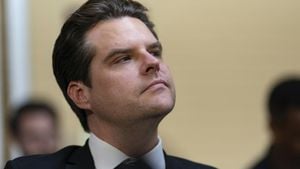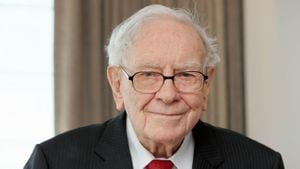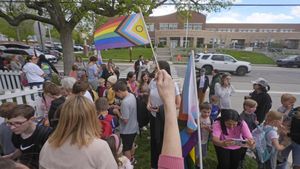Nasa continues to grapple with the conundrum of safely bringing back two astronauts stranded aboard the Boeing Starliner spacecraft. Delays stemming from technical malfunctions, including thruster failures, have compounded the uncertainty surrounding their return.
The astronauts, Butch Wilmore and Sunita Williams, launched on June 5 with the expectation of only being away for eight days. Unfortunately, the mission faced severe setbacks, causing the two to remain on the International Space Station (ISS) for over two months.
During a recent media conference, Nasa officials confirmed they are still assessing the spacecraft’s readiness for return. A decision is expected by the end of August, as the agency evaluates if the Starliner is capable of completing the trip back to Earth.
Ken Bowersox, NASA’s associate administrator for space operations, stated the agency is weighing several options. They could keep the astronauts on the ISS until early 2025 and send the Starliner back uncrewed.
Alternatively, they might switch to utilizing SpaceX’s Crew Dragon for the return. This later option would allow Wilmore and Williams to leave the ISS on SpaceX’s upcoming flight, but it would extend their stay by several months.
NASA also faces logistical challenges, such as limited docking space at the ISS. With only two U.S. spacecraft allowed to be at the station simultaneously, coordination is key to avoid overcrowding.
The SpaceX Crew-9 astronauts have been affected by this situation as well. Their return was delayed, causing them to extend their stay by about a month because of the uncertainty surrounding the Starliner.
While some speculate the astronauts may eventually use SpaceX for their return, Boeing maintains confidence. The company insists the Starliner can still safely bring the astronauts back, but this message has met skepticism from several within NASA.
"We’ve got time available before we bring Starliner home and we want to use it wisely," Bowersox explained. The review process will include thorough analysis of the Starliner’s propulsion system, especially after multiple thruster failures.
Five thrusters malfunctioned during the Starliner’s approach to the ISS, prompting NASA to mobilize experts for investigation. This detailed assessment should help determine if the spacecraft can be trusted for safe re-entry or if alternative plans are necessary.
There’s increasing doubt among some experts about the Starliner’s readiness for upcoming missions as analysts contend there remains significant risk. Dr. Simeon Barber from the Open University shared concerns about NASA officials being unconvinced about the spacecraft's reliability for safe return.
Critics have expressed astonishment over the number of critical issues the Starliner has faced since launch. Despite multiple repairs and rigorous testing, the spacecraft's performance has consistently raised red flags.
During the first critical mission phase, engineers discovered additional helium leaks and numerous malfunctions, drastically impacting the planned timeline. Originally designated for eight days, the mission is stretching much longer thanks to these unfortunate developments.
SpaceX has completed nine crewed flights for NASA, highlighting the relatively better track record of its spacecraft under similar conditions. Comparatively, the Starliner is just beginning its inaugural crewed test after years of development and testing.
Nasa officials have reiterated the importance of they’re being diligent about safety, with their decision-making highly reliant on data. They are pursuing external experts to analyze the Starliner data as part of this rigorous review.
The urgency behind these decisions cannot be understated as both Bowersox and others have acknowledged the limited resources available and the effects on the crew’s health. They highlighted how it is critical to reach conclusions swiftly.
During this high-stakes period, Wilmore and Williams remain engaged with their tasks aboard the ISS, using the time to contribute to important research. Both astronauts were well aware of the risks before launching on the Starliner mission, knowing their timeline could shift significantly.
Joe Acaba, NASA’s chief astronaut, emphasized the professionalism of the astronauts. He reassured the public they are maintaining communication with Wilmore and Williams, keeping them informed of developments on their return mission.
Nasa demonstrated the cultural shift since the Challenger and Columbia disasters, where dissenting opinions were often ignored. The current safety culture promotes transparency and is emphasizing these discussions to prevent similar mishaps.
For now, the forthcoming weeks will be critical as NASA attempts to reconcile the data on the Starliner and chart the best course for the astronauts’ safe return. Experts anticipate new reviews and assessments leading toward final decisions about the astronauts’ future.
While uncertainty looms, NASA both acknowledges and leverages the knowledge gained from the challenges initiated by the Starliner. Every development, every data point is instrumental as they weigh the possibility of sending their astronauts home on this beleaguered spacecraft.
While NASA remains cautiously optimistic about the Starliner’s capabilities, contingency plans are still being put forth. The astronauts are ready to pivot to the SpaceX Dragon if necessary, assuring everyone their safety remains the priority.
NASA will continue to analyze data, repair issues, and engage experts until they’re certain about the best course of action. The agency balances risk management alongside buoying confidence in both their crafts and their crews.
Suni Williams and Butch Wilmore exemplify resilience, welcoming the challenge of their extended mission. For them, the experience reflects another layer of complexity to human space exploration and the intricacies of modern space travel.



